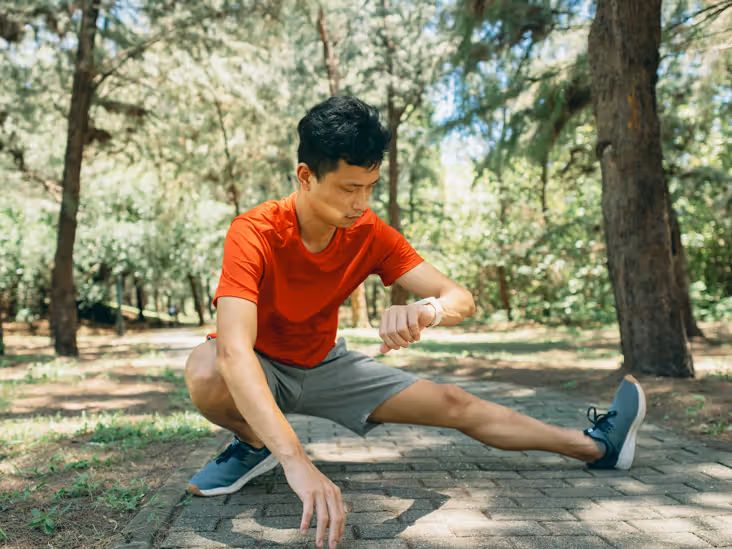Finding time for fitness can feel like a challenge. Between work, family, and social commitments, squeezing in a workout often falls to the bottom of the to-do list. The good news is that staying active doesn’t require hours at the gym or intense training sessions. You can significantly improve your physical and mental well-being by building small, simple fitness habits into your daily routine.
This guide will show you how to weave movement into your day without a major overhaul of your schedule. These habits are easy to start, practical to maintain, and powerful enough to make a real difference in your health. By focusing on consistency over intensity, you can create a sustainable active lifestyle that leaves you feeling energized and strong.
Why Daily Activity Matters
Before jumping into the habits, it’s important to understand why daily movement is so crucial. Regular physical activity is one of the most effective ways to maintain your health. It’s not just about managing weight; it’s about enhancing your entire quality of life.
From a physical standpoint, consistent activity strengthens your heart, improves circulation, and lowers the risk of chronic conditions like heart disease and type 2 diabetes. It also helps build and maintain strong muscles and bones, which is essential for mobility and preventing injuries, especially as you age. Mentally, the benefits are just as impressive. Exercise is a proven mood booster, releasing endorphins that reduce stress and anxiety. It can also improve cognitive function, sharpen your memory, and lead to better, more restful sleep. In short, a little movement each day contributes to a healthier body and a clearer, happier mind.
Simple Fitness Habits to Weave Into Your Day
Integrating fitness into your life is about finding opportunities for movement in your existing routine. Here are some straightforward habits you can start today.
Make Walking a Priority
Walking is one of the most underrated forms of exercise. It’s free, accessible, and has a low impact on your joints. The key is to make it a non-negotiable part of your day.
- Take a Brisk Morning Walk: Start your day with a 15-20 minute walk around your neighborhood. It’s a fantastic way to wake up your body and clear your head before the day’s demands begin.
- Walk During Breaks: Instead of scrolling on your phone during your lunch break, use that time for a walk. Even a short 10-minute stroll can help break up long periods of sitting and refresh your focus.
- Park Further Away: When you go to the store or office, intentionally park at the far end of the lot. Those extra steps add up over time. The same logic applies to public transit—get off one stop early and walk the rest of the way.
Start a Daily Stretching Routine
Stretching is vital for flexibility, posture, and relieving muscle tension. A consistent stretching habit can prevent stiffness and improve your range of motion, making all other physical activities feel easier.
- Morning Stretches: Dedicate five minutes right after you wake up to simple stretches. Focus on your neck, shoulders, back, and hamstrings to loosen up muscles that have been inactive overnight.
- Pre-Bedtime Routine: A gentle stretching session before bed can help release the day’s tension and prepare your body for a restful night’s sleep. Try child’s pose, a gentle spinal twist, and cat-cow stretches.
Sneak in Desk Exercises
If you have a desk job, you know how easy it is for hours to pass without moving. Breaking up prolonged sitting is crucial for your health. Simple exercises done right at your desk can counteract the negative effects of a sedentary workday.
- Seated Leg Lifts: While sitting, extend one leg straight out and hold for a few seconds, then lower it. Alternate legs to strengthen your quadriceps.
- Shoulder Rolls and Neck Stretches: Relieve tension in your upper body by rolling your shoulders backward and forward. Gently tilt your head from side to side and chin to chest to stretch your neck muscles.
- Chair Squats: Stand up in front of your chair and perform a few squats, using the chair for balance if needed. This activates your glutes and leg muscles.
Embrace Active Commuting
Rethink how you get from point A to point B. If possible, turn your commute into a workout.
- Walk or Cycle: For shorter distances, consider walking or biking instead of driving. It’s a great way to get your heart rate up while also reducing your carbon footprint.
- Take the Stairs: Make a rule to always take the stairs instead of the elevator or escalator. It’s a simple switch that provides a quick and effective cardio burst.
Make Fitness Fun and Social
One of the best ways to stick with a fitness routine is to make it enjoyable. Turning exercise into a social activity can provide motivation, accountability, and a sense of community.
- Join Group Classes: Try a yoga, dance, or spin class. The structured environment and energy of the group can be highly motivating.
- Involve Friends and Family: Instead of meeting a friend for coffee, suggest a walk in the park. Plan active family outings on the weekends, like a bike ride or a hike. Sharing your fitness journey with others makes it more fun and helps keep you on track.
Set Realistic Goals and Track Your Progress
To stay motivated, it’s important to have a clear idea of what you want to achieve. Setting realistic goals and monitoring your progress provides a sense of accomplishment and keeps you moving forward.
Start with small, attainable goals, such as “walk for 15 minutes three times this week.” As you consistently meet your goals, you can gradually increase the duration or intensity. Use a fitness app, a journal, or a simple calendar to track your activities. Seeing how far you’ve come is a powerful motivator to keep going.
Frequently Asked Questions (FAQ)
How much activity do I need each day?
General guidelines recommend at least 30 minutes of moderate-intensity activity most days of the week. However, even 10-15 minutes a day is a great start. The most important thing is to be consistent.
What if I have no motivation to exercise?
Start small. Don’t aim for a one-hour workout if you’re feeling unmotivated. Commit to just five minutes of walking or stretching. Often, starting is the hardest part, and you may find you want to continue once you get going. Making exercise social or linking it to an activity you enjoy (like listening to a podcast while you walk) can also boost motivation.
Can these small habits really make a difference?
Absolutely. Consistency is more impactful than occasional, intense workouts. Small, daily habits add up to significant long-term health benefits, improving everything from your cardiovascular health to your mood and energy levels.
How do I stay active if I have a very busy schedule?
Focus on “exercise snacking”—short bursts of activity throughout the day. Take the stairs, do a few squats while waiting for your coffee to brew, or stretch during a phone call. These micro-workouts are easy to fit into even the busiest of schedules.
Your Journey to an Active Life Starts Now
Building a healthier, more active lifestyle doesn’t require a dramatic transformation overnight. It begins with a single step—and then another. By incorporating these simple, manageable habits into your daily life, you are investing in your long-term health and happiness.
Start today. Choose one or two habits from this list that feel doable and commit to them. You’ll soon discover that staying active is not a chore but a rewarding part of your day that helps you feel your best.




